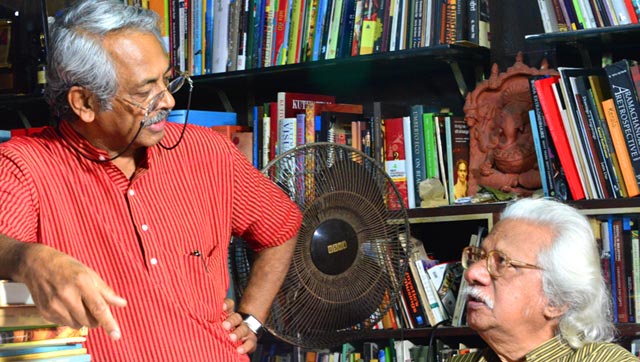Chennai: There are not many giants in Indian cinema today. Two of the remaining few are Adoor Gopalakrishnan (whose last film, Oru Pennum Rendaanum, in Malayalam came in 2008) and Girish Kasaravalli (Koormavatara in Kannada was his last in 2012).
And when one makes a documentary on the other, it is bound to be fascinatingly insightful. Except for a day’s schedule, Kasaravalli’s 90-minute documentary on Gopalakrishnan, titled Images and Reflections: A Journey into Adoor’s Imagery, is complete.
Kasaravalli said over the telephone from Bangalore that the film was wrapped up in four schedules, each a week long. “I went along with Adoor to some of the places that have been strongly associated with him”.
One of them was Pallickal in a remote corner in Kerala where Gopalakrishnan was born in 1941—times of great political upheaval in India. The other was Alappuzha — the scenic backwater town of Kerala’s Allepey district renowned for houseboat tourism—where Adoor shot two of his movies, Naalu Pennungal in 2007 and Oru Pennum Rendaanum.
While invariably most people adore Gopalakrishnan’s Elippathayam and Vidheyan (with Mammootty rivetingly essaying a brute tax collector), Kasaravalli averred that his two favourite films in the Adoor oeuvre were Anantaram and Mukhamukham.
Anantaram analyses the life of a young man and how his multi-faceted talents are camouflaged by his psychiatric disorder.
Mukhamukham – which was seen at the time of its release in 1984 as a pro-Communist movie abroad and as an anti-Communist one in India – was really not a political work. “It is more humanist, less political”, Gopalakrishnan once wrote in Cinema Anubhavam in order to try and quell all those allegations against him.
Kasaravalli may not have courted as many controversies as Adoor has, but Girish’s cinema has been equally powerful, often seen as a great documentation of the Kannada society. His first feature-length documentary in 75 minutes, Ananthamurthy: Not A Biography But A Hypothesis, which opened two years ago, engaged us with interesting observations on the life and times of this great social thinker.
Part of the New Indian cinema that began in 1969 with Bhuvan Shome, Kasaravalli walked into the genre eight years later with his brilliant Ghatashraddha—a haunting study of society with a young pregnant widow as a protagonist. He has made 14 features, and among them Tabarana Kathe, Mane and Gulabi Talkies continue to remain the most sought after and the most discussed.

